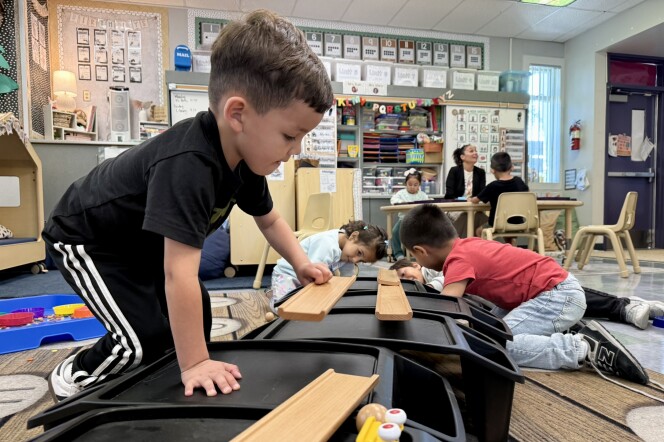With our free press under threat and federal funding for public media gone, your support matters more than ever. Help keep the LAist newsroom strong, become a monthly member or increase your support today.
'The Flood Just Continues': Inside L.A. Hospitals' Struggle With the COVID-19 Surge

Our news is free on LAist. To make sure you get our coverage: Sign up for our daily newsletters. To support our non-profit public service journalism: Donate Now.
L.A. hospitals are being stretched increasingly thin as the massive surge in coronavirus cases roars ahead unabated. Things are getting so bad that we could be looking at rationed care in the not-too-distant future.
"We have no ICU beds," said Brad Spellberg, chief medical officer of L.A. County-USC Medical Center, one of the area's largest hospitals. "We are just continually, 24 hours a day scrambling to move patients around. The flood just continues."
Within a matter of days, County-USC will be forced to make its exhausted staff treat even more patients than they have been, he said.
"We are the safety net, that is the point," Spellberg said. "The safety net itself is stressed to the limit."
Over the last week, L.A. County health officials reported an average of 14,032 new coronavirus casesdaily, with 82 deaths a day on average. Of those new cases, an anticipated 12% will wind up in the hospital and 12% of those hospitalized will crowd already stretched intensive care units.
At that rate of new cases, one day's worth could produce a staggering 1,683 hospitalizations and 202 ICU patients.
'DO THE MATH'
Intensive care units in L.A. are caring for more than 1,200 COVID-19 patients. All of Southern California's hospitals have exhausted their regular ICU bed capacity. That's caused hospitals to go into surge mode, putting patients who would normally be in the ICU in surgery recovery rooms and other areas of a facility.
Hospital administrators are struggling to find qualified staff, like emergency doctors, ICU nurses and respiratory therapists.
Meanwhile, many more health care workers have contracted the virus, as have members of their families, said Nancy Gin, Southern California regional medical director for Kaiser Permanente.
"Just as the numbers of COVID-positive cases is soaring in the community, our staff are in the community as well," Gin said. "Our staff are vulnerable to child care issues. When schools close and the kids are home, many folks don't necessarily have a safety net for child care, they don't have family that can step in and help watch the kids. And they're not able to work."

Across L.A. at USC Keck hospital, staff are converting more areas of the hospital to COVID-19 units and seeing more patients by telemedicine, said Neha Nanda, medical director of infection. Keck's seven ICUs are almost full.
"Now we are seeing about north of 500 [patients] per day. So if you do the math, it's going to be very difficult to keep up", she said. "And with that, all it takes for an individual is to wear a mask. And to follow the county orders. I don't think it's a tall order."
'WHERE ARE YOU GOING TO GO FOR YOUR HEART ATTACK?'
As dire as the situation is, we're on the brink of things getting even worse.
The crush of cases spurred L.A. County health officials to send guidance to county hospitals on how to ration emergency care, reports the L.A. Times. Instead of trying to save every life, health workers' goal would be to save as many patients as possible. That means those less likely to survive would not get the same kind of care they would usually receive.
All of the region's hospitals should have plans ready for this "crisis stage" of care, L.A. County Department of Health Services Director Dr. Christina Ghaly said Monday.
That type of battlefield medicine-type triage is just weeks away, Spellberg said.
"Where are you going to go for your heart attack and your stroke or your car accident, and the hospitals are full?" he said. "And you come in with a critical illness, and we're like, well, you're going to have to wait over here for a few hours because we've got a hundred other people like you that we're working our way through. You don't want that."
Spellberg said Los Angeles is well on its way to looking like New York last April, when hospitals were completely overwhelmed with COVID-19 patients.
"You've got nurses that are assigned 20 patients when they're only supposed to be assigned five," he said. "You've got doctors who haven't managed a ventilator in 20 years suddenly being responsible to manage ventilators. If it gets as bad as it did in New York, and if we don't slow this thing down in L.A. that's where we're going."
OVERALL LOOK AT LA COUNTY NUMBERS:
Here's a look at longer-term trends in the county. To see more, visit our California COVID-19 Trackerand choose L.A. County or any other California county that interests you. These numbers are current as of Sunday, Dec. 20:









